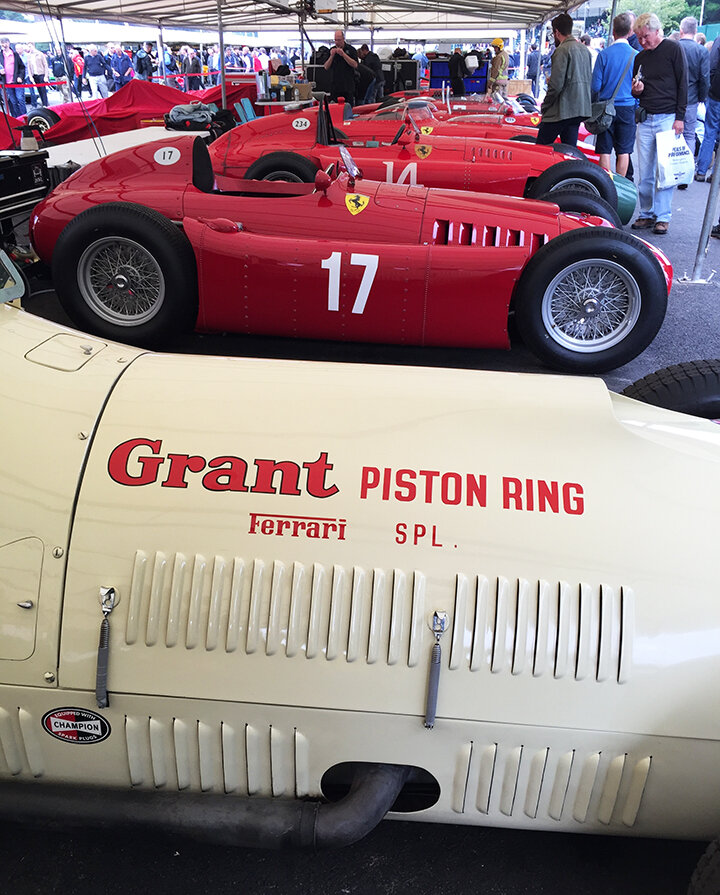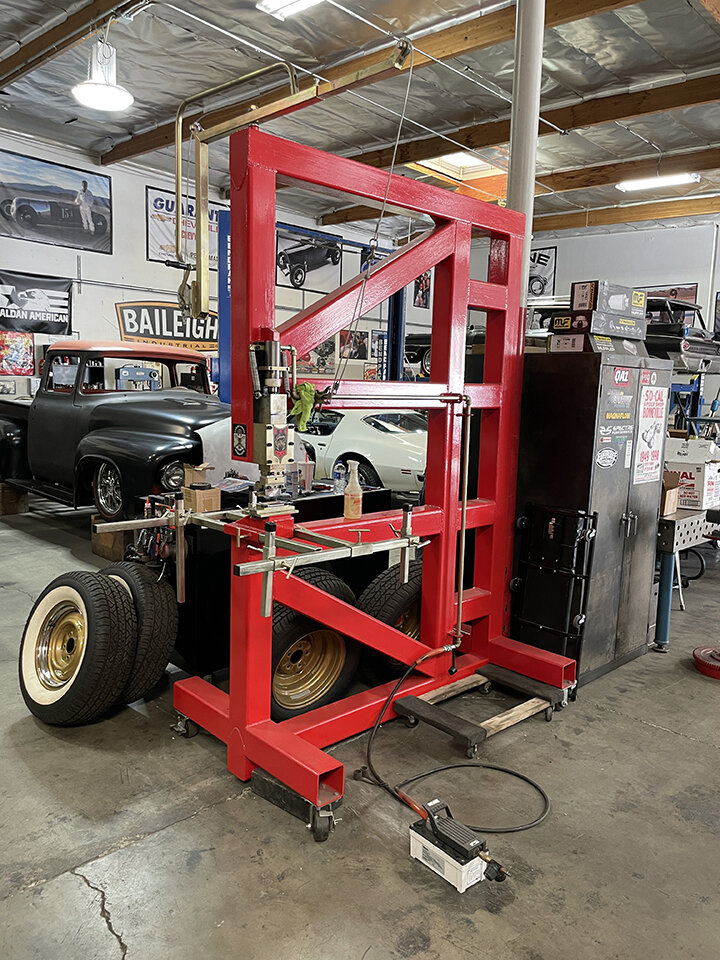How To Punch Hot Rod Louvers with Jimmy Shine
February 2021 • By Tony Thacker
Presented by HandHFlatheads.comTURN DEVICE Horizontal to read captions
I Googled louvers and got all these images of Datsuns, DeLoreans and Mustangs and the like with louvers—plastic rear window louvers, not hot rod louvers. Despite their popularity, very little seems to have been written about this aesthetic but functional device.
An early proponent of louvers, Duncan Pittaway’s 27-liter 1911 ‘Beast of Turin’
Few if any early hot rods, say from the 30s had louvers beyond those that Henry Ford punched in the hood sides. Of course, over on the oval tracks you can see louvers begin to pop up and down in the hood sides of race cars where they were nothing but functional to get hot air out of the engine compartment.

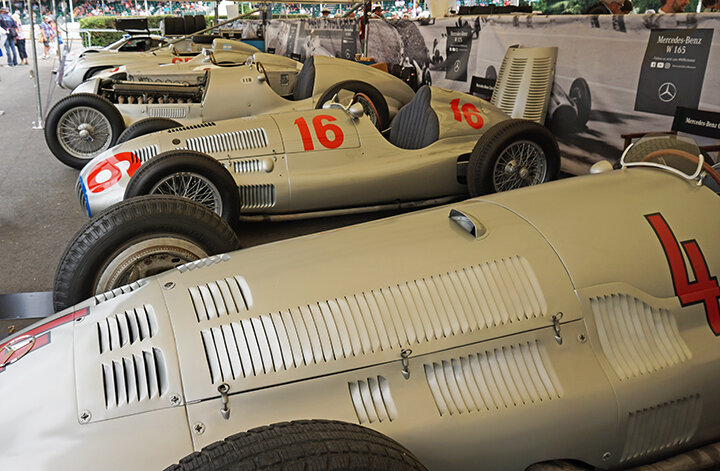
Of course the legendary American racecar builder Harry Miller was not opposed to a row or two louvers but if you really wanted louvers in your racecars you had to look to the German ‘Silver Arrows’ of Auto Union and Mercedes Benz. They were literally covered with both innys and outys.

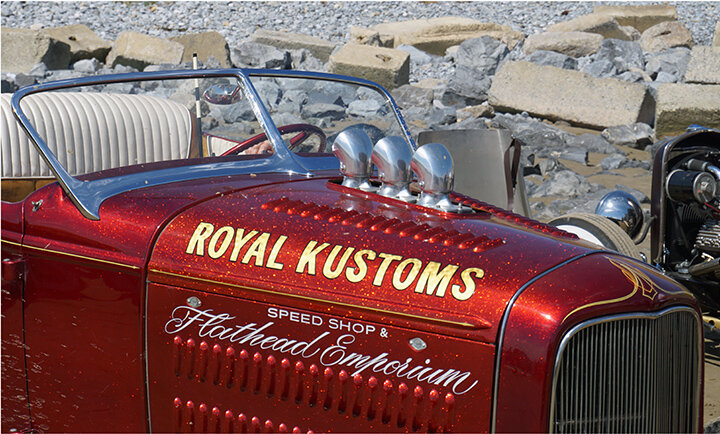
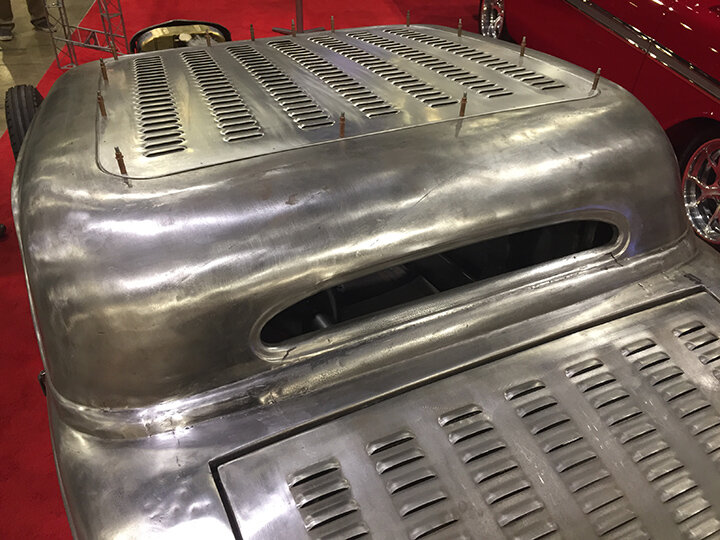
Gradually, the trend filtered down to the hot rod world and after World War II we begin to see louvers appear in custom hood sides and hood tops, for example on the McGee Roadster that appeared on the cover of the October 48 issue of Hot Rod.
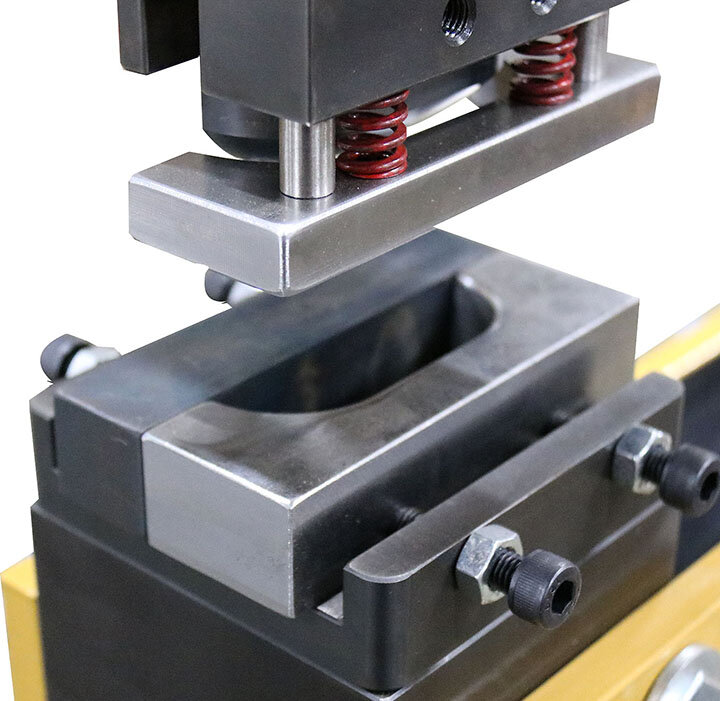
To get the scoop, as it were, on this on-going trend we visited several hot rod shops including Jimmy Shine’s where it just happened he was punching the hood sides of Bruce Fortie’s 392 Hemi-powered Deuce Coupe being built by the Veazie Bros.
Jimmy can punch 3, 4 or 5-inch louvers
For many years the best hot rod louvers in LA were punched by Eric Vaughn but Eric has retired and Jimmy thought he might as well build his own louver press. Such a machine can be purchased used or new from Baileigh Industrial but they start at over $7,000. Even though he has a great relationship with Baileigh Jimmy wanted to build his own adding a few features.
TURN DEVICE Horizontal to read captions below

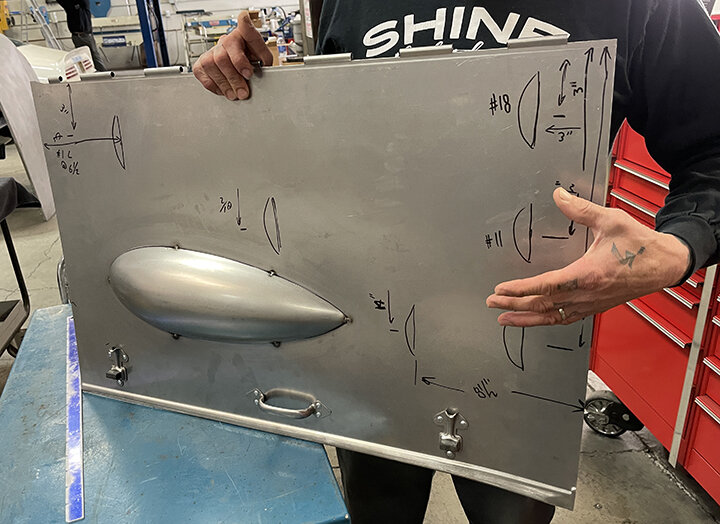
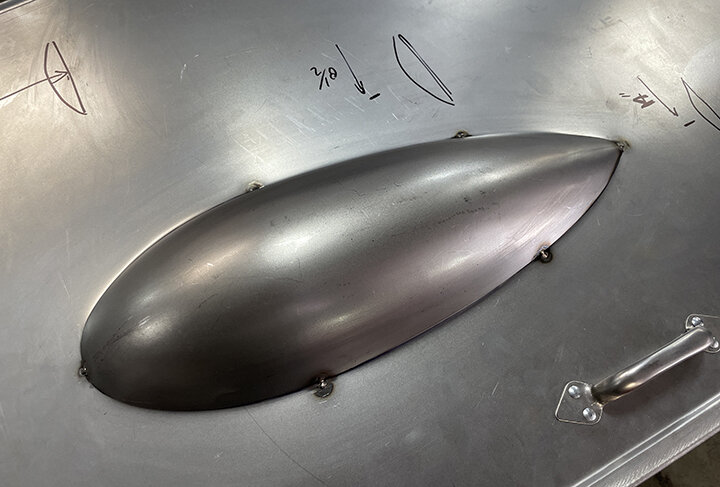
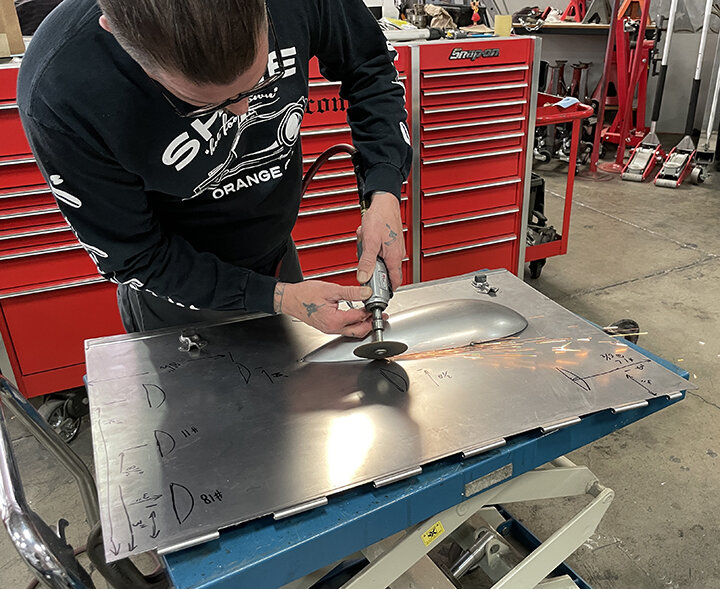
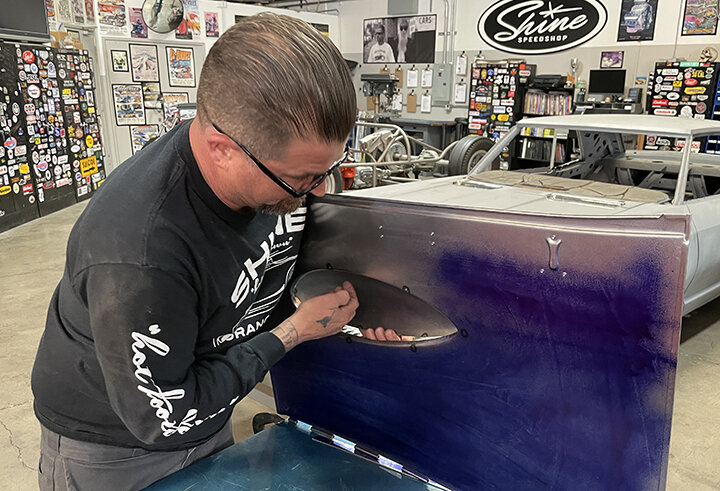
Luckily, Jimmy had these Rootlieb ’32 Ford hood sides to punch. Whatever the project, be extra careful with the layout before you make a cut. You wouldn’t be the first to punch the wrong way or be a little bit off and make a mess of it—there’s no fixing a wrong-un.
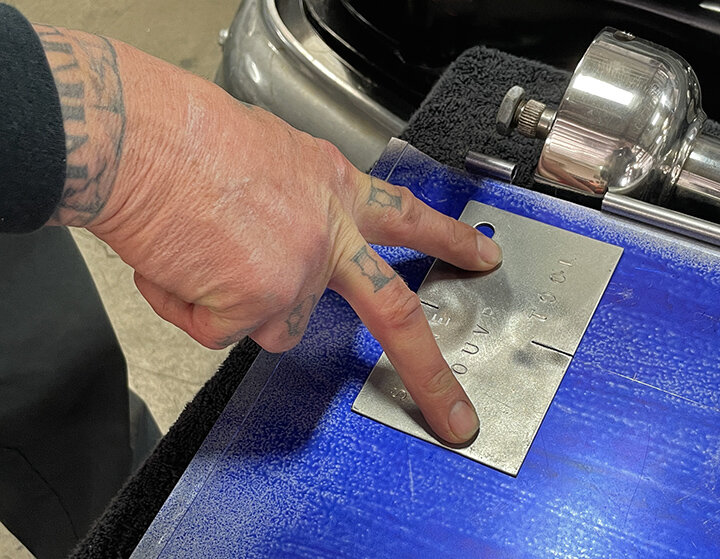
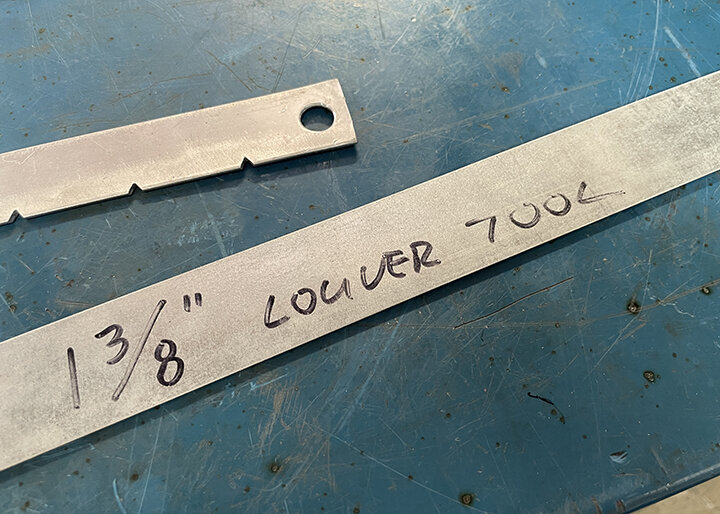
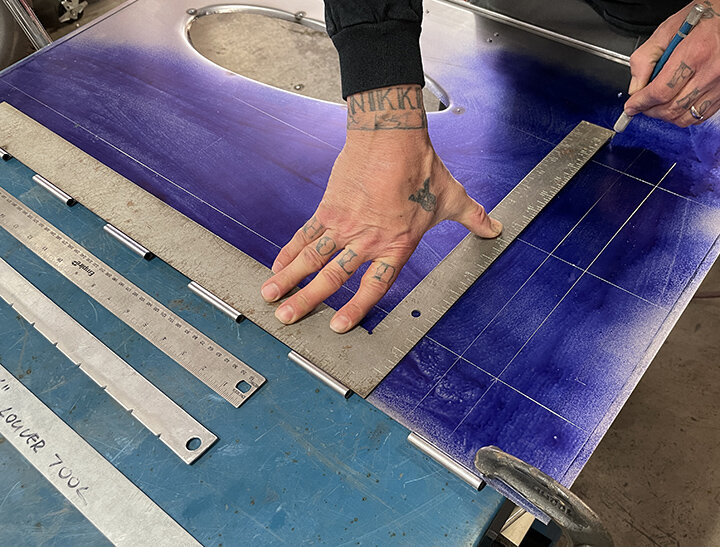

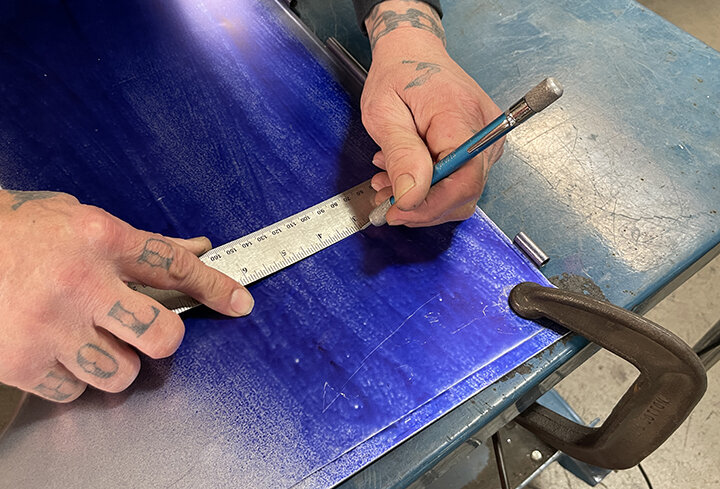
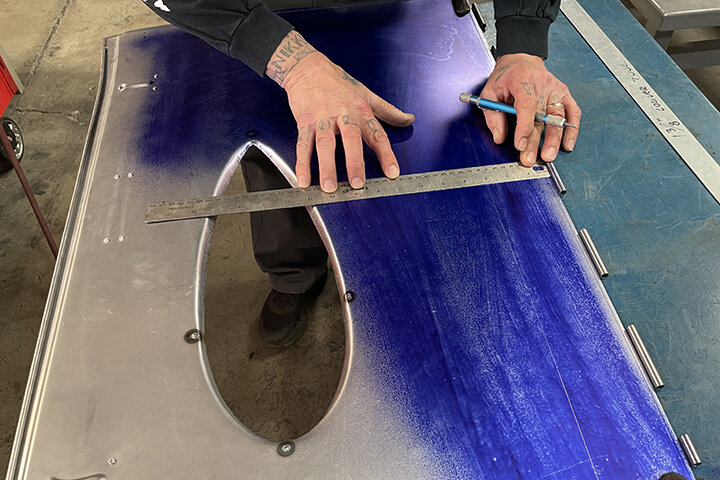
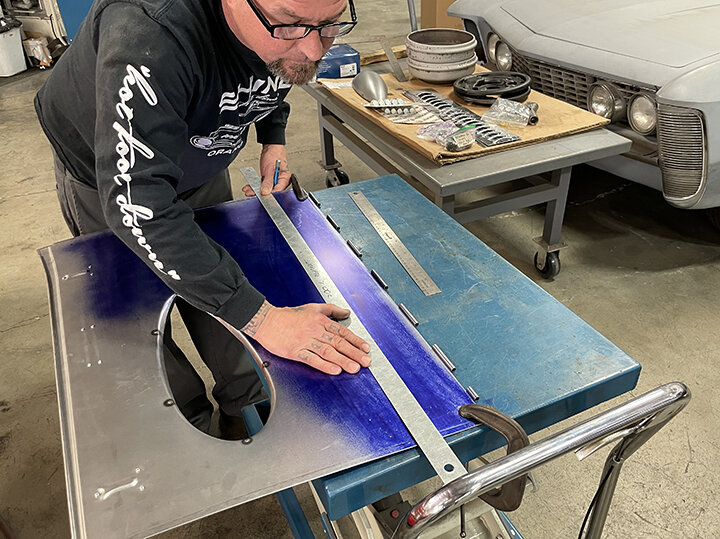
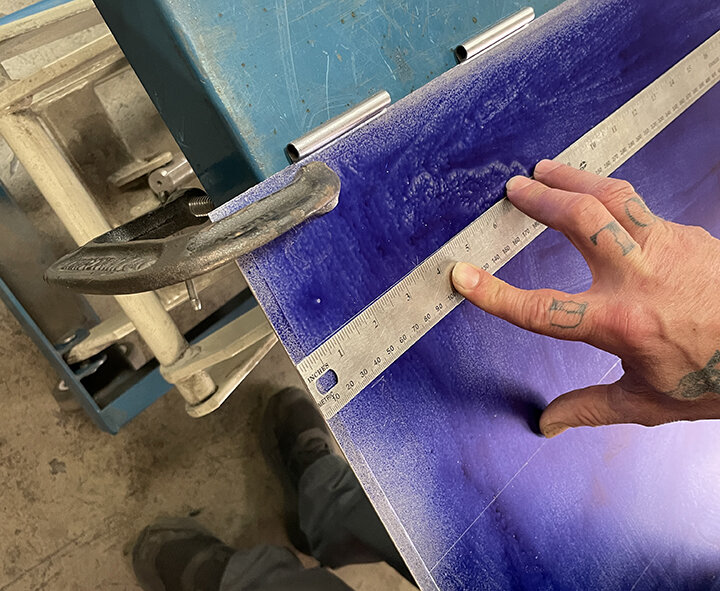
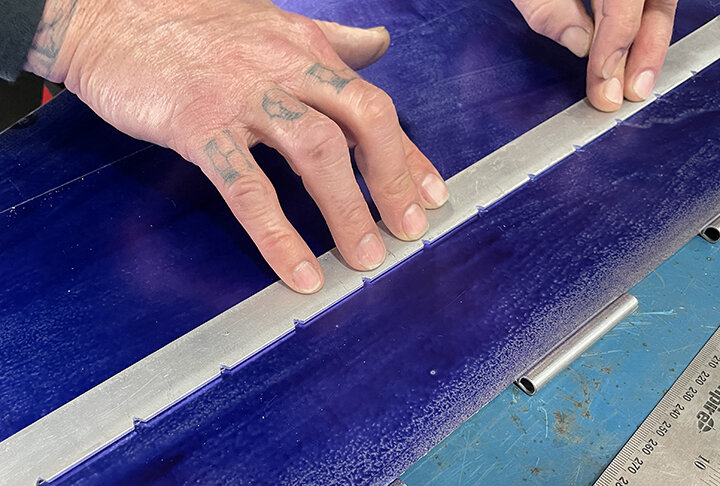
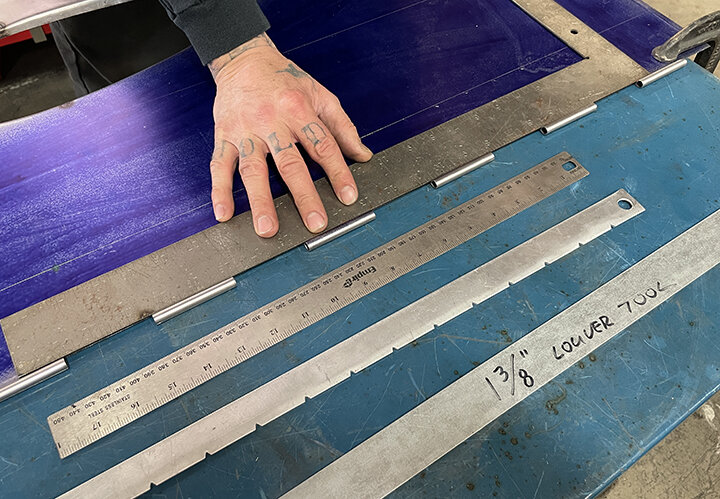
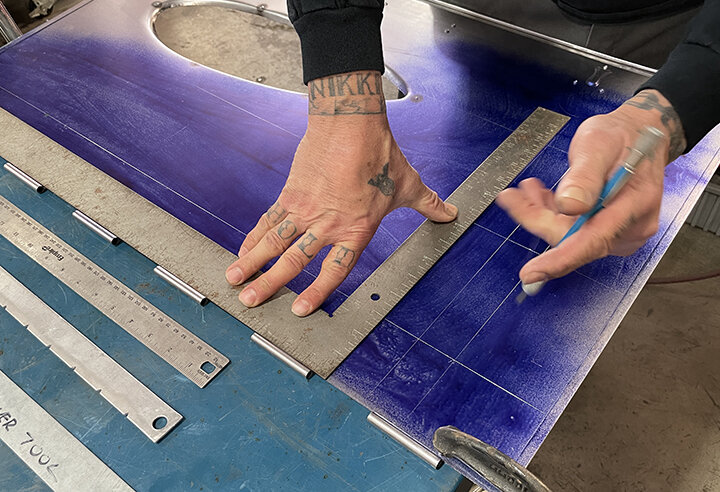
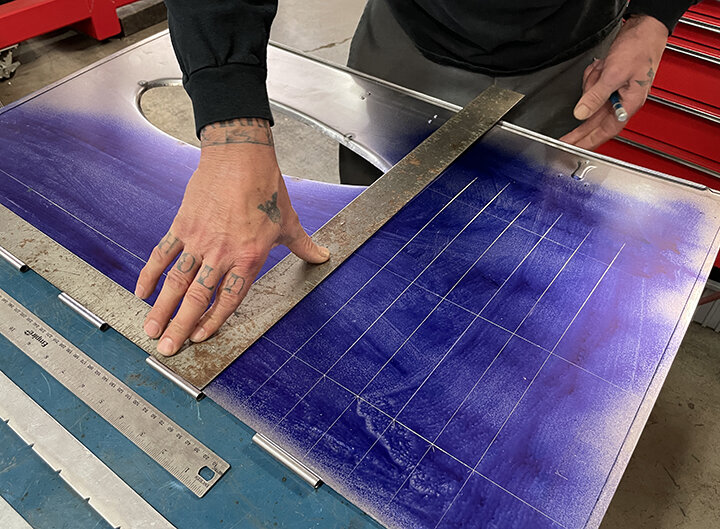
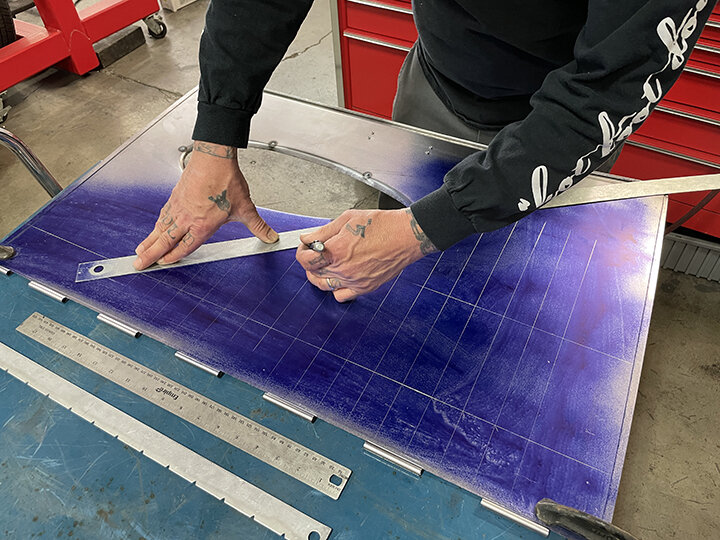
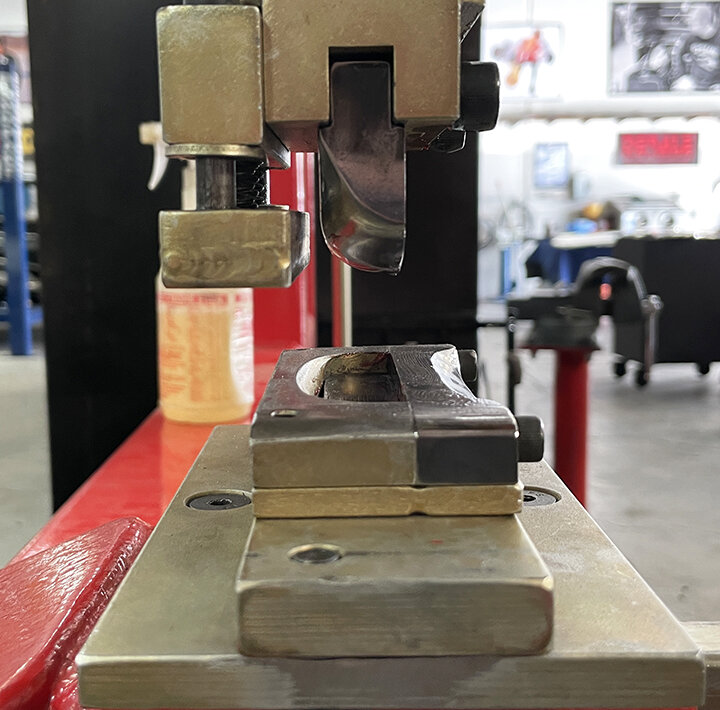
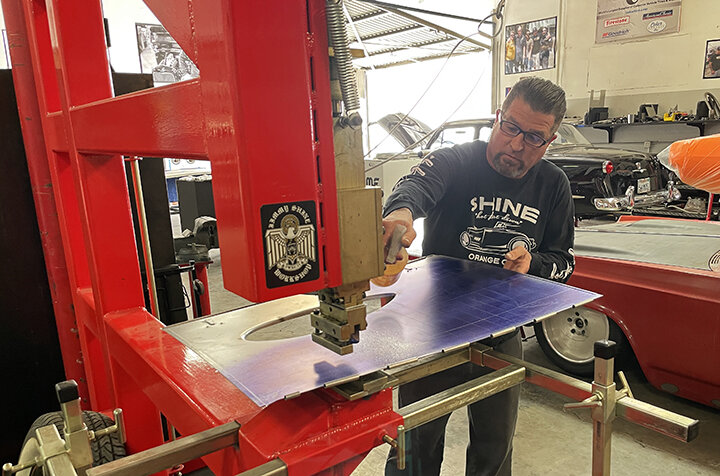
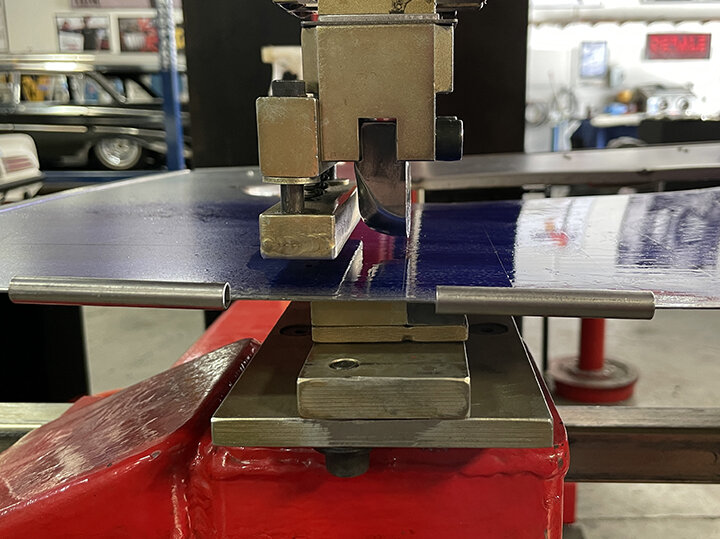
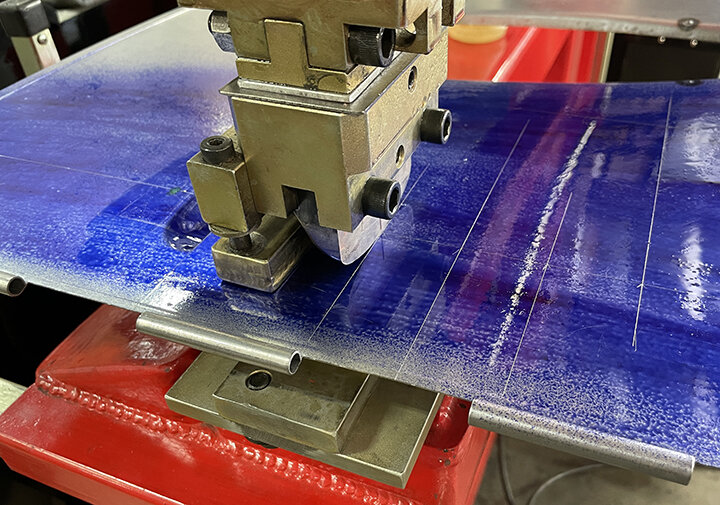
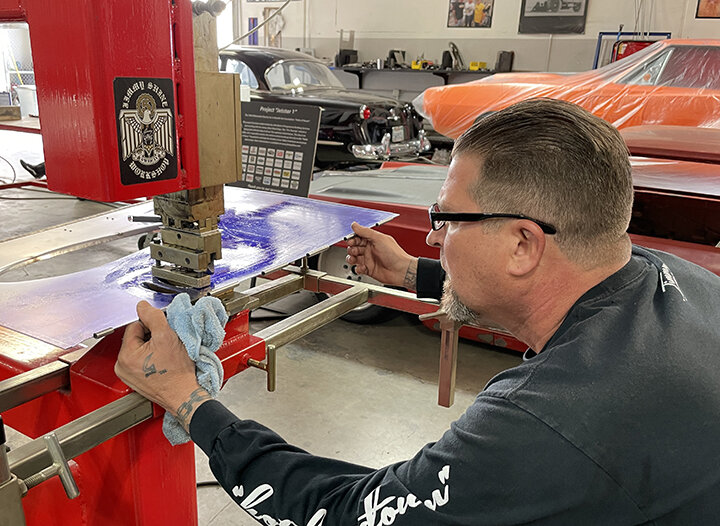

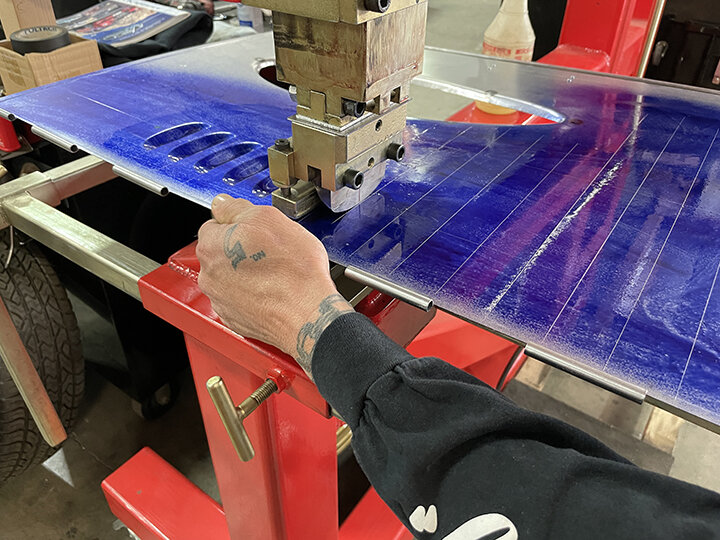
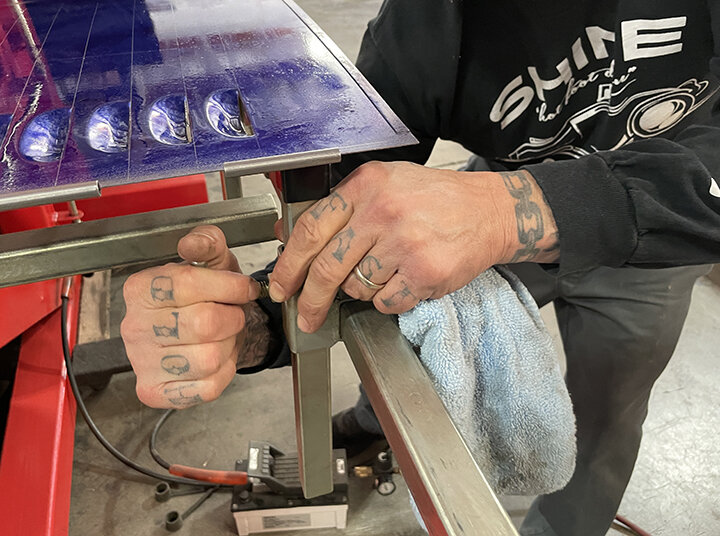
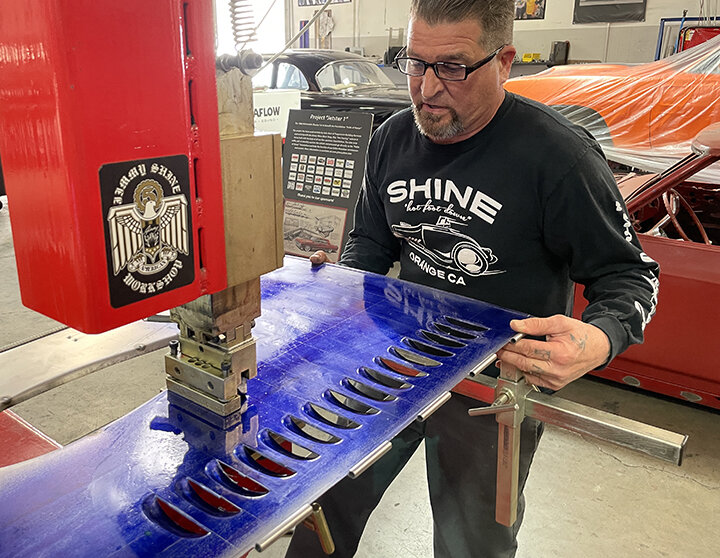
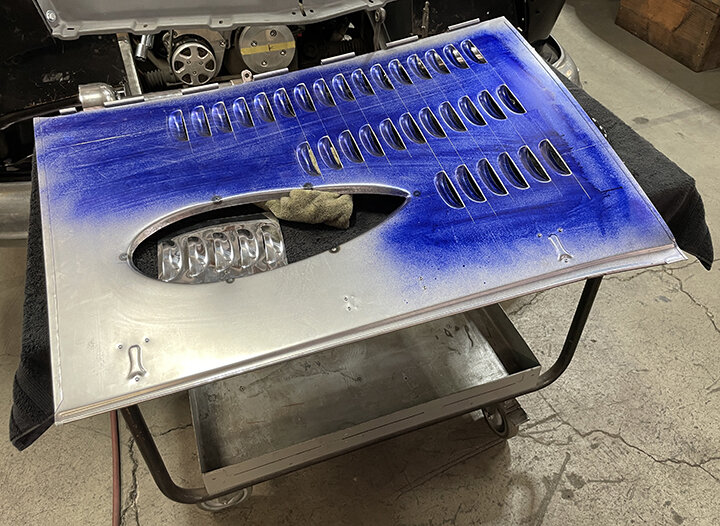
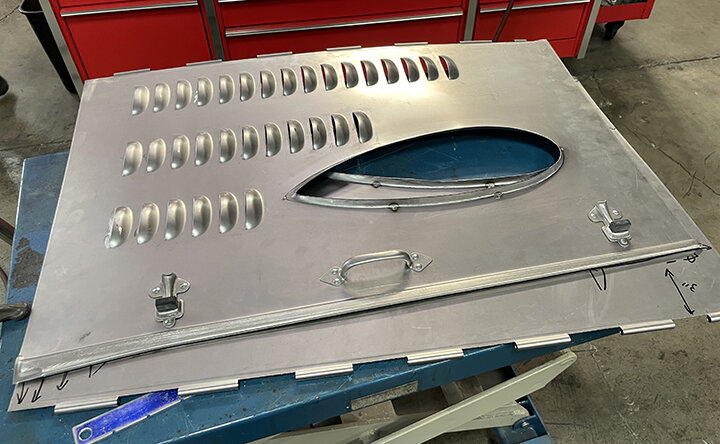
Top and bottom or inner and outer views of the finished louvered hood side.
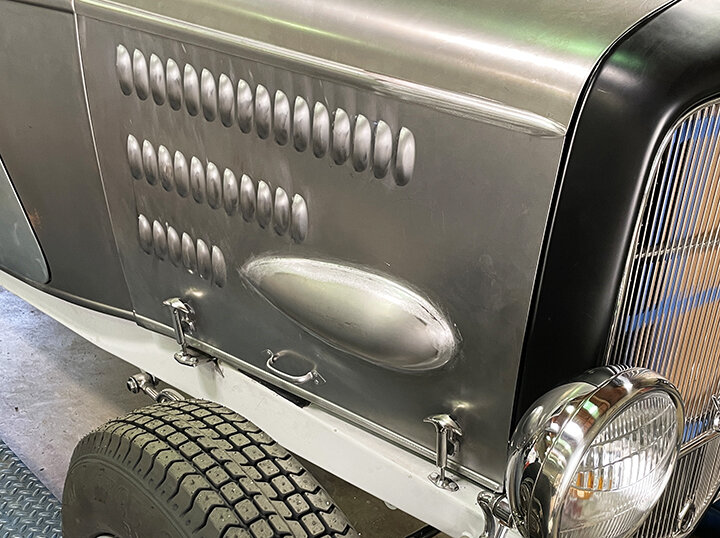

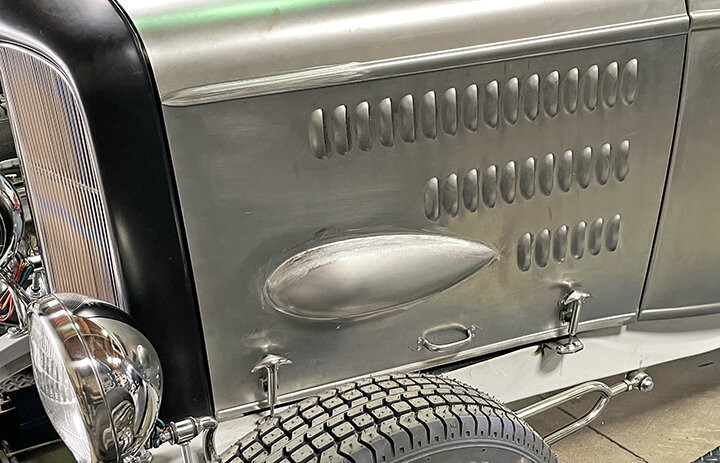
The hood sides went back to the Veazie Bros. where Janne Forsvik re-attached the blisters before the completed sides were installed on Bruce Fortie’s 392 stack-injected ’32 3-window.
Hard to find pix of F’d up louvers, they go in the trash, but my own Roadster developed a ‘monkey tail’ on the far right row, it drove me crazy. The cause was not following the center line and only using the previous louver as reference consequently the louvers creeped out of line.


